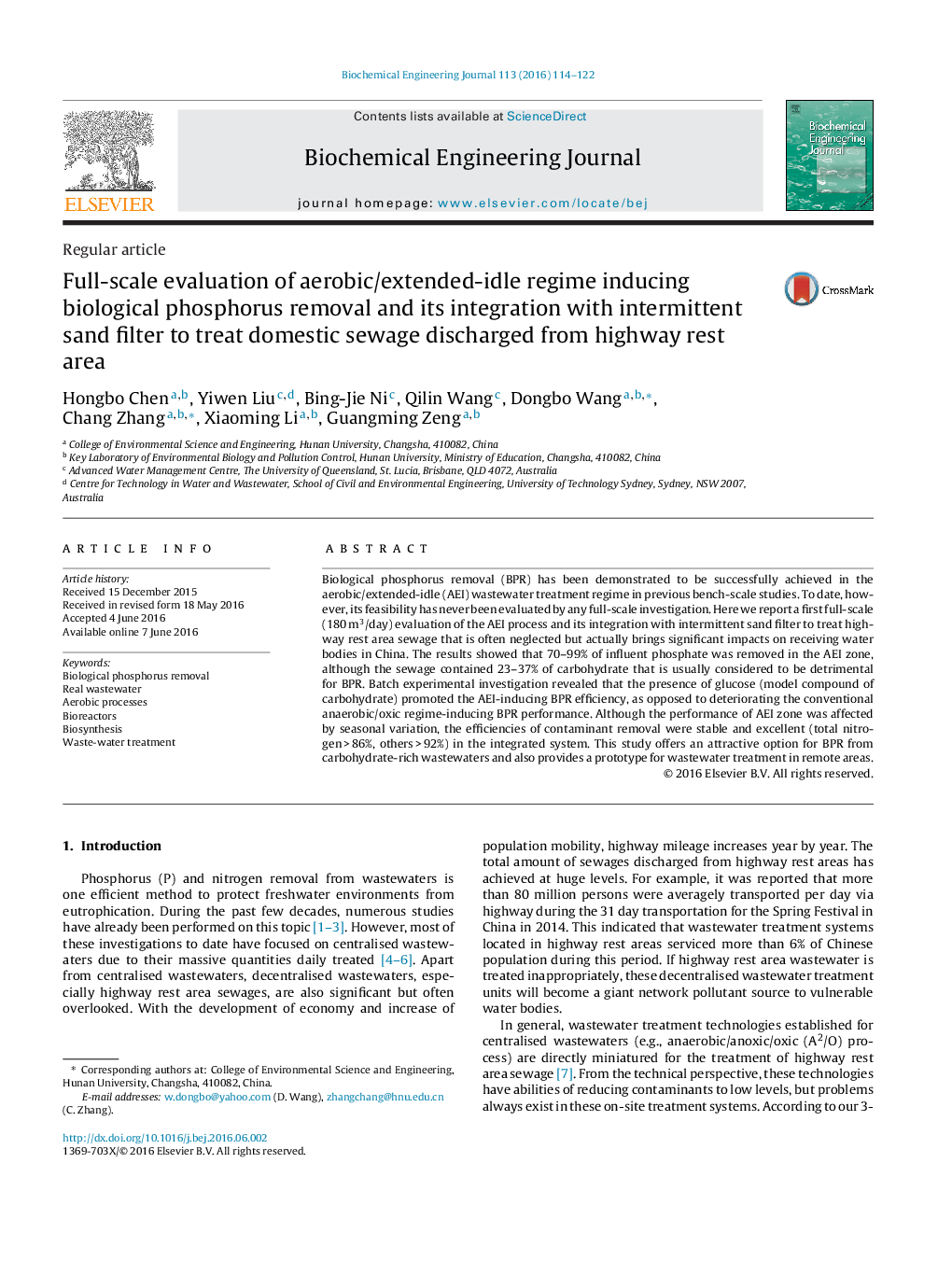| Article ID | Journal | Published Year | Pages | File Type |
|---|---|---|---|---|
| 2747 | Biochemical Engineering Journal | 2016 | 9 Pages |
•The feasibility of AEI regime was confirmed by integrated with intermittent sand filter.•70–99% of influent phosphate was removed in the AEI zone.•The presence of glucose can promote the AEI-inducing BPR efficiency.•The efficiencies of contaminant removal were stable and excellent (total nitrogen.•86%) in the integrated system.
Biological phosphorus removal (BPR) has been demonstrated to be successfully achieved in the aerobic/extended-idle (AEI) wastewater treatment regime in previous bench-scale studies. To date, however, its feasibility has never been evaluated by any full-scale investigation. Here we report a first full-scale (180 m3/day) evaluation of the AEI process and its integration with intermittent sand filter to treat highway rest area sewage that is often neglected but actually brings significant impacts on receiving water bodies in China. The results showed that 70–99% of influent phosphate was removed in the AEI zone, although the sewage contained 23–37% of carbohydrate that is usually considered to be detrimental for BPR. Batch experimental investigation revealed that the presence of glucose (model compound of carbohydrate) promoted the AEI-inducing BPR efficiency, as opposed to deteriorating the conventional anaerobic/oxic regime-inducing BPR performance. Although the performance of AEI zone was affected by seasonal variation, the efficiencies of contaminant removal were stable and excellent (total nitrogen > 86%, others > 92%) in the integrated system. This study offers an attractive option for BPR from carbohydrate-rich wastewaters and also provides a prototype for wastewater treatment in remote areas.
Graphical abstractFigure optionsDownload full-size imageDownload as PowerPoint slide
